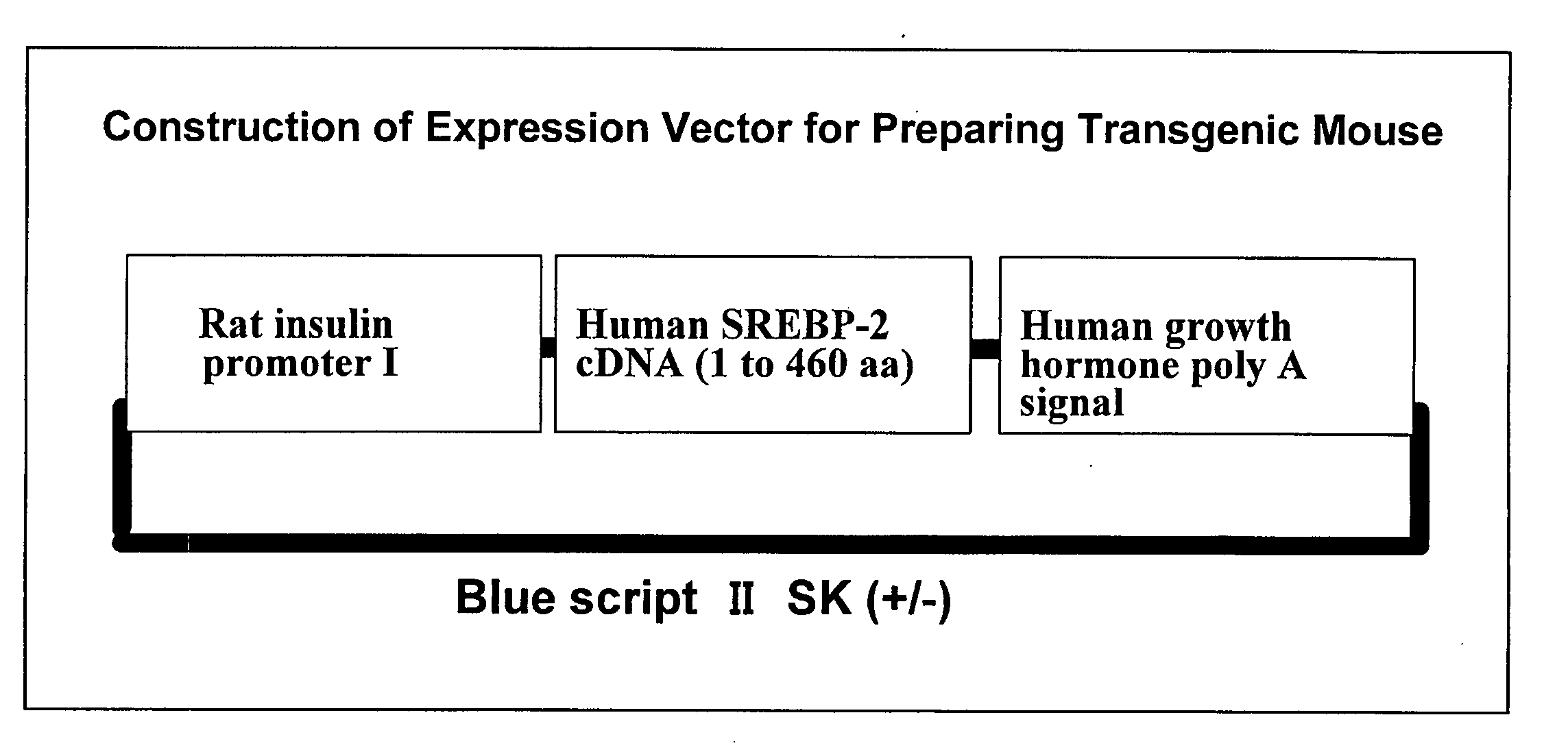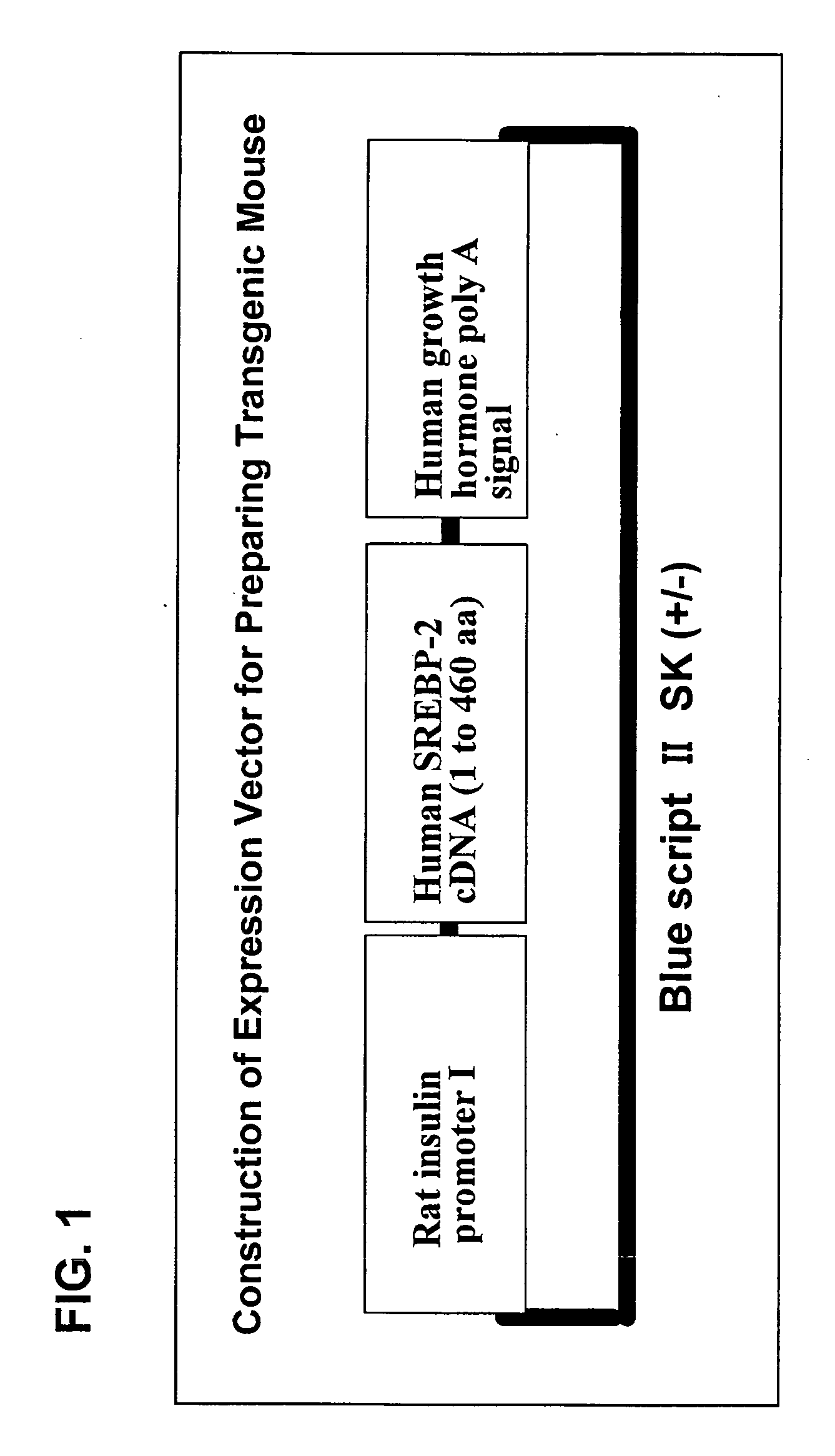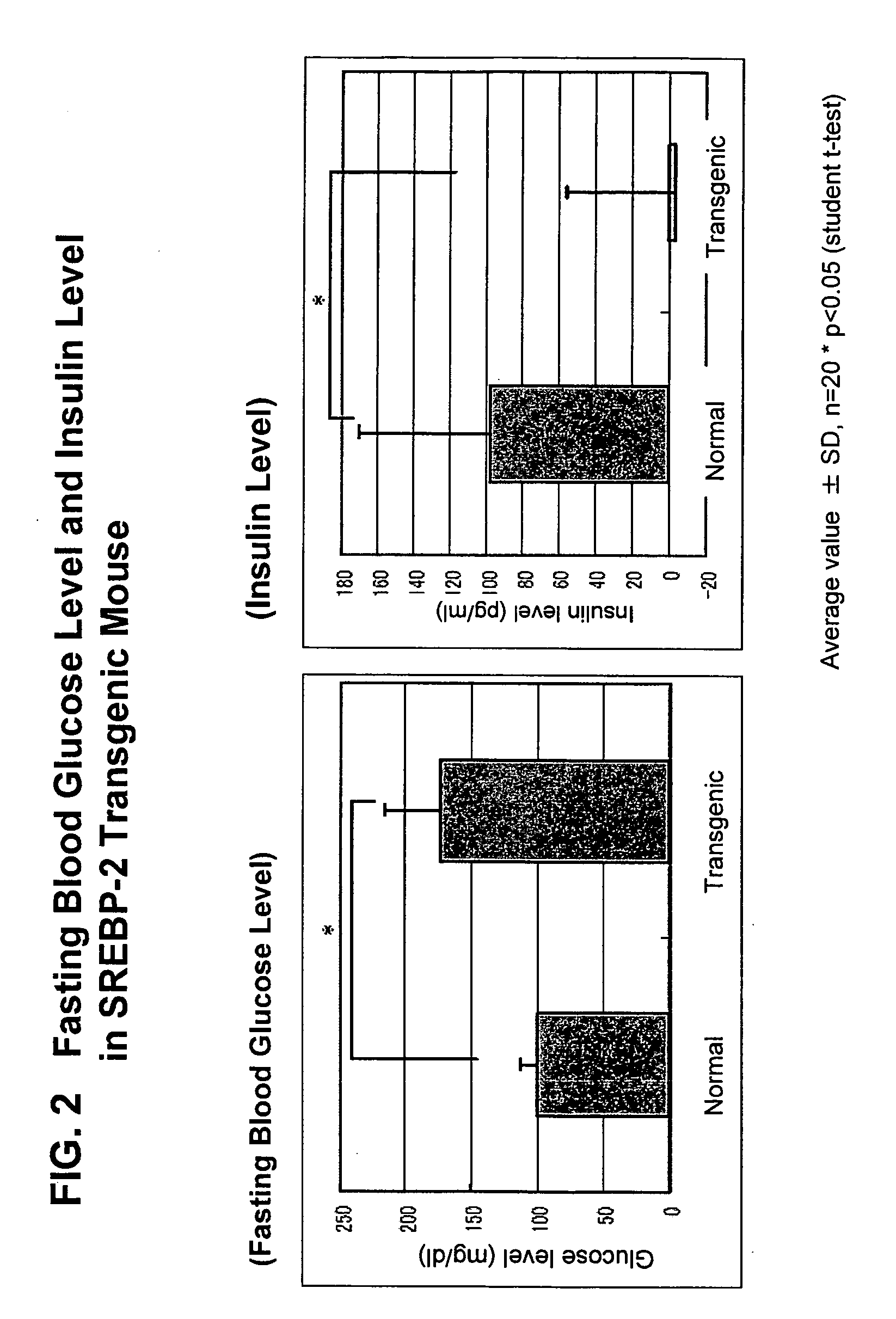Nonhuman transgenic animal as type 2 diabetes model
a type 2 diabetes, nonhuman technology, applied in the field of nonhuman transgenic animals as type 2 diabetes models, can solve the problems of no mechanism of onset of the disease, no effective therapeutic agents have been developed today, etc., and achieve the effect of high lipid di
- Summary
- Abstract
- Description
- Claims
- Application Information
AI Technical Summary
Benefits of technology
Problems solved by technology
Method used
Image
Examples
examples
[0049]While the invention is described hereinafter with reference to examples and experimental examples, the invention is by no means restricted to these examples.
(1) Production of SREBP-2 Gene Expression Vector Under the Control of Insulin Promoter
[0050]Standard methods were used for molecular biology methods (see “Molecular Cloning, A Laboratory Manual”, Third Edition, Cold Spring Harbor Press, Cold Spring Harbor Laboratory, Cold Spring Harbor, N.Y., 2001). For producing DNAs for microinjection necessary for preparing the transgenic mouse, SREBP-2 gene expression vectors were produced under the control of an insulin promoter. The construction thereof is shown in FIG. 1.
(Promoter)
[0051]Rat insulin promoter I (Alpert, S., Hanahan, D. and Teitelman, G, Cell, 1988, Apr., 22; 53(2): 295-308) that has been successful for expression in the past Tg mouse was used as an expression promoter for specific expression of the introduced gene in the β-cell of the animal. The portion from −715 bp ...
PUM
| Property | Measurement | Unit |
|---|---|---|
| pH | aaaaa | aaaaa |
| green fluorescent protein | aaaaa | aaaaa |
| resistance | aaaaa | aaaaa |
Abstract
Description
Claims
Application Information
 Login to View More
Login to View More - R&D
- Intellectual Property
- Life Sciences
- Materials
- Tech Scout
- Unparalleled Data Quality
- Higher Quality Content
- 60% Fewer Hallucinations
Browse by: Latest US Patents, China's latest patents, Technical Efficacy Thesaurus, Application Domain, Technology Topic, Popular Technical Reports.
© 2025 PatSnap. All rights reserved.Legal|Privacy policy|Modern Slavery Act Transparency Statement|Sitemap|About US| Contact US: help@patsnap.com



